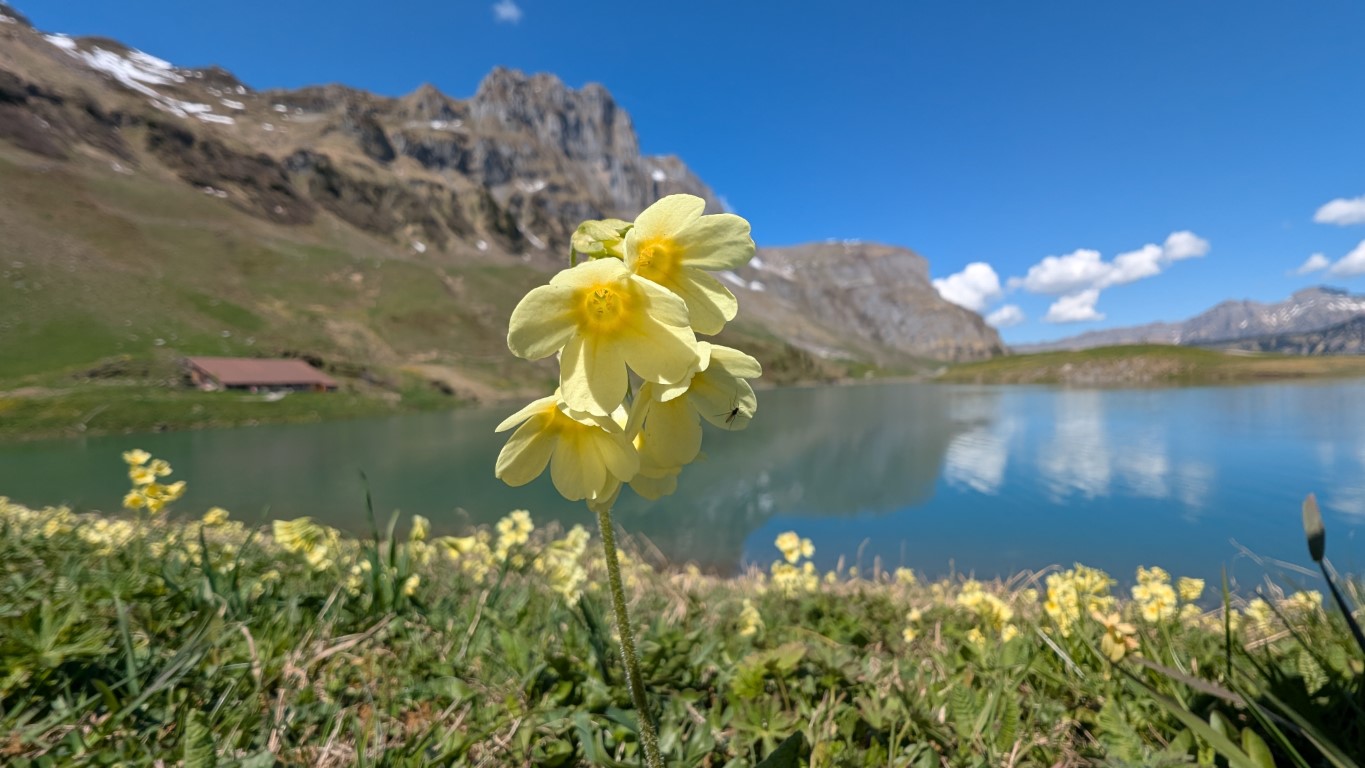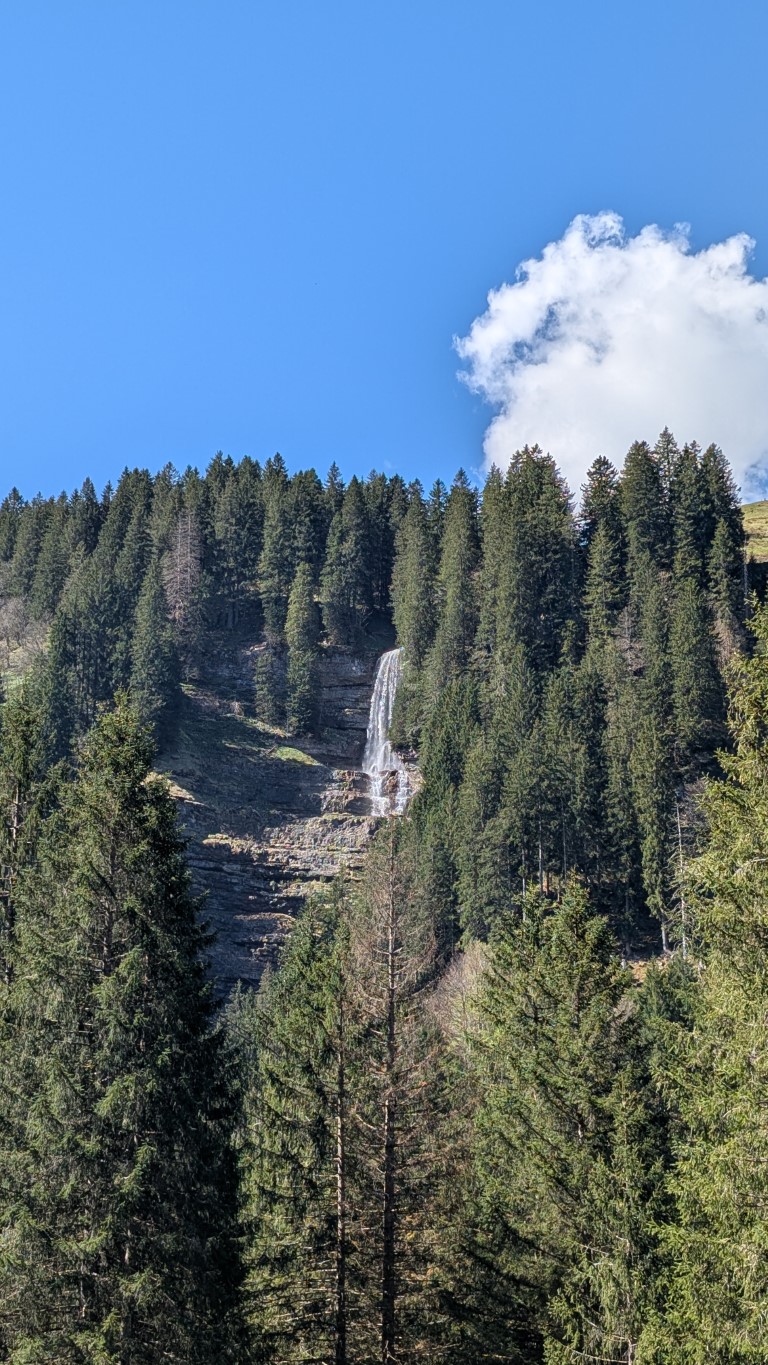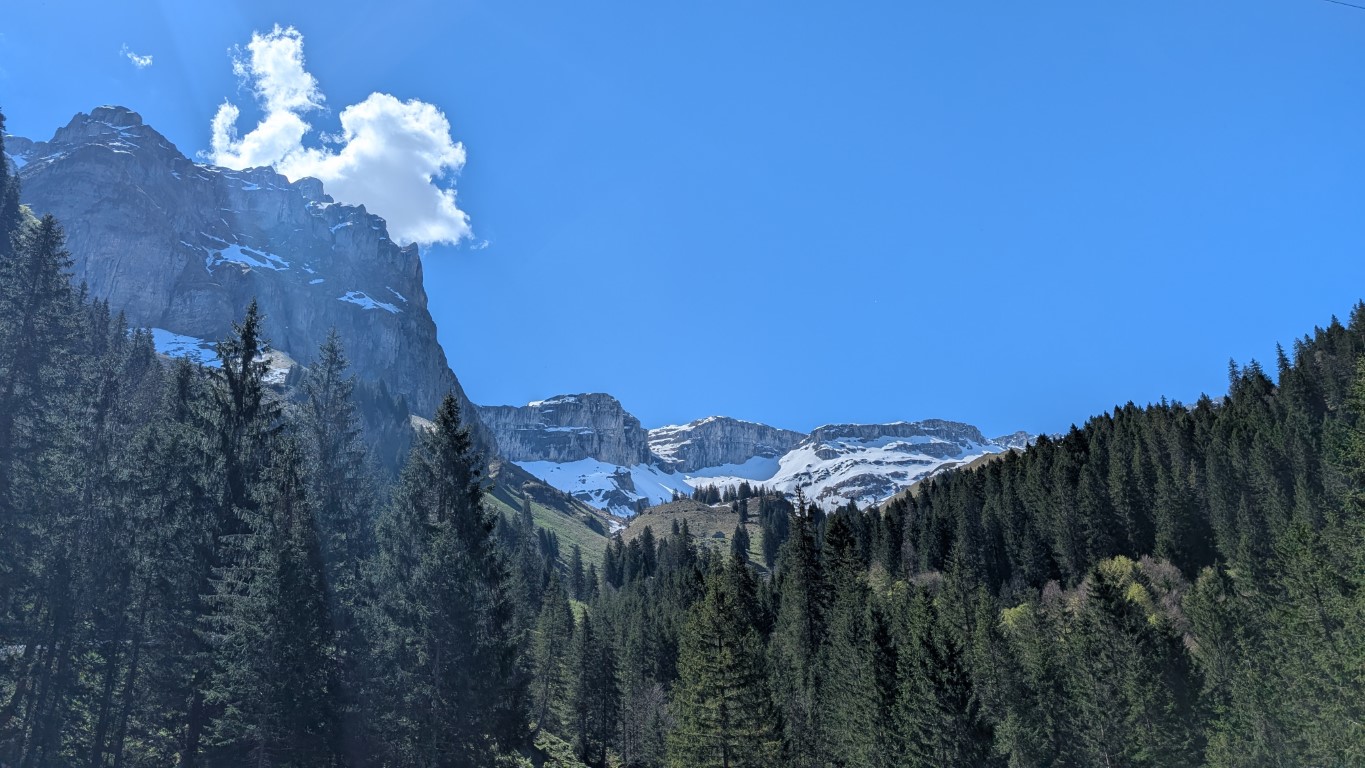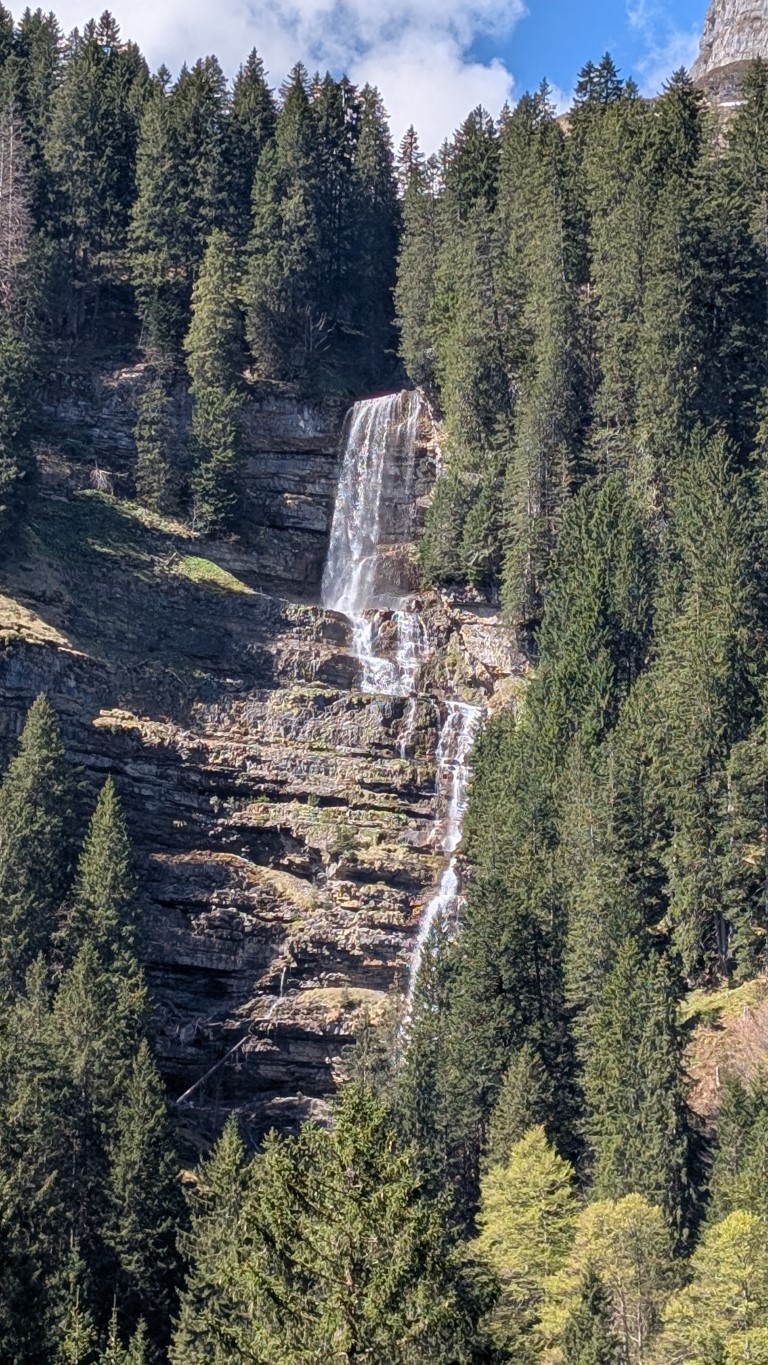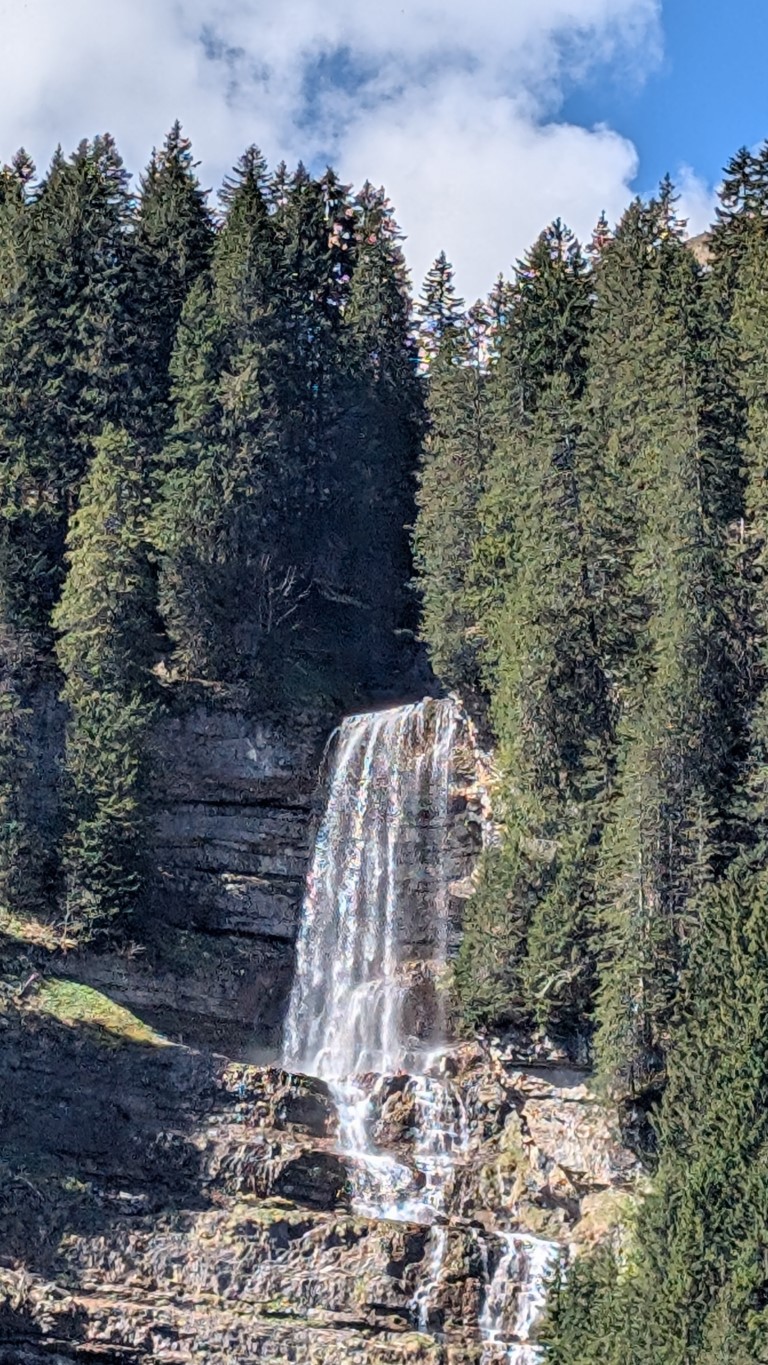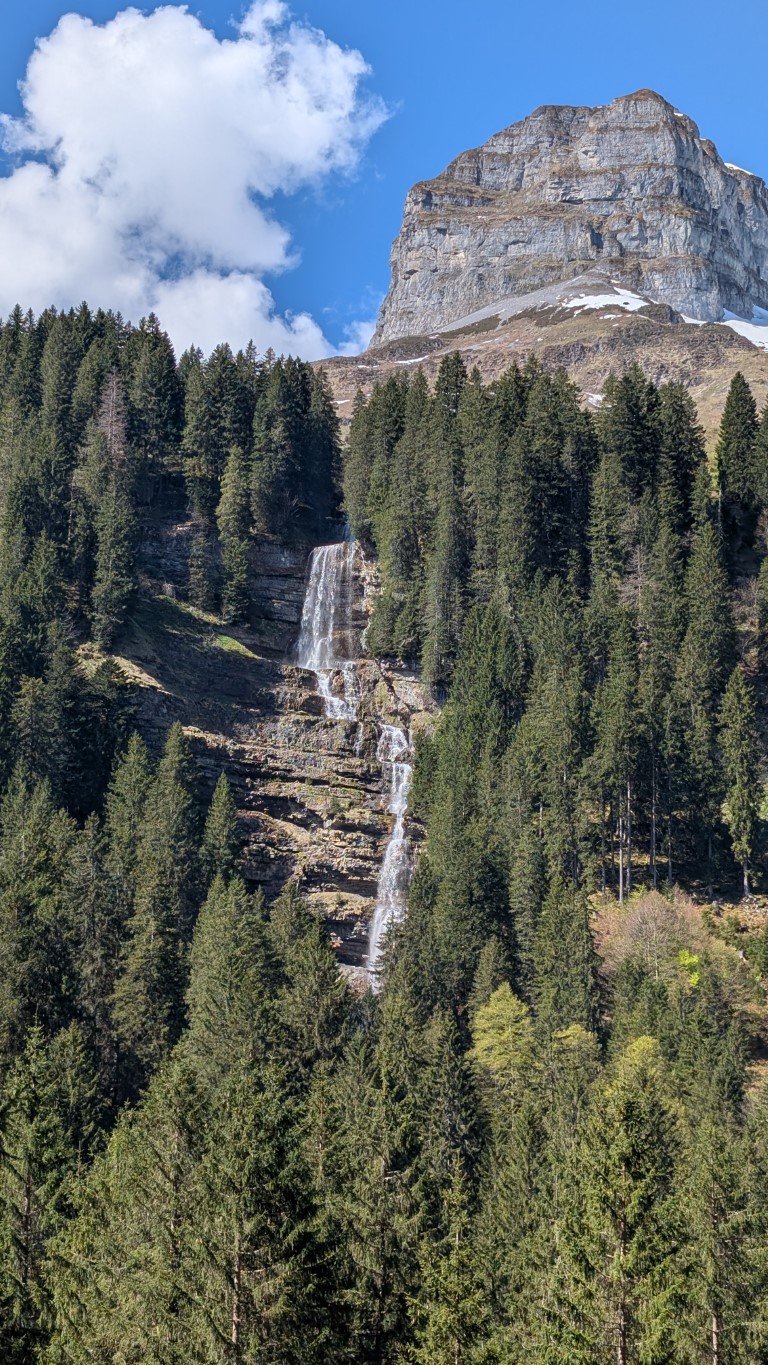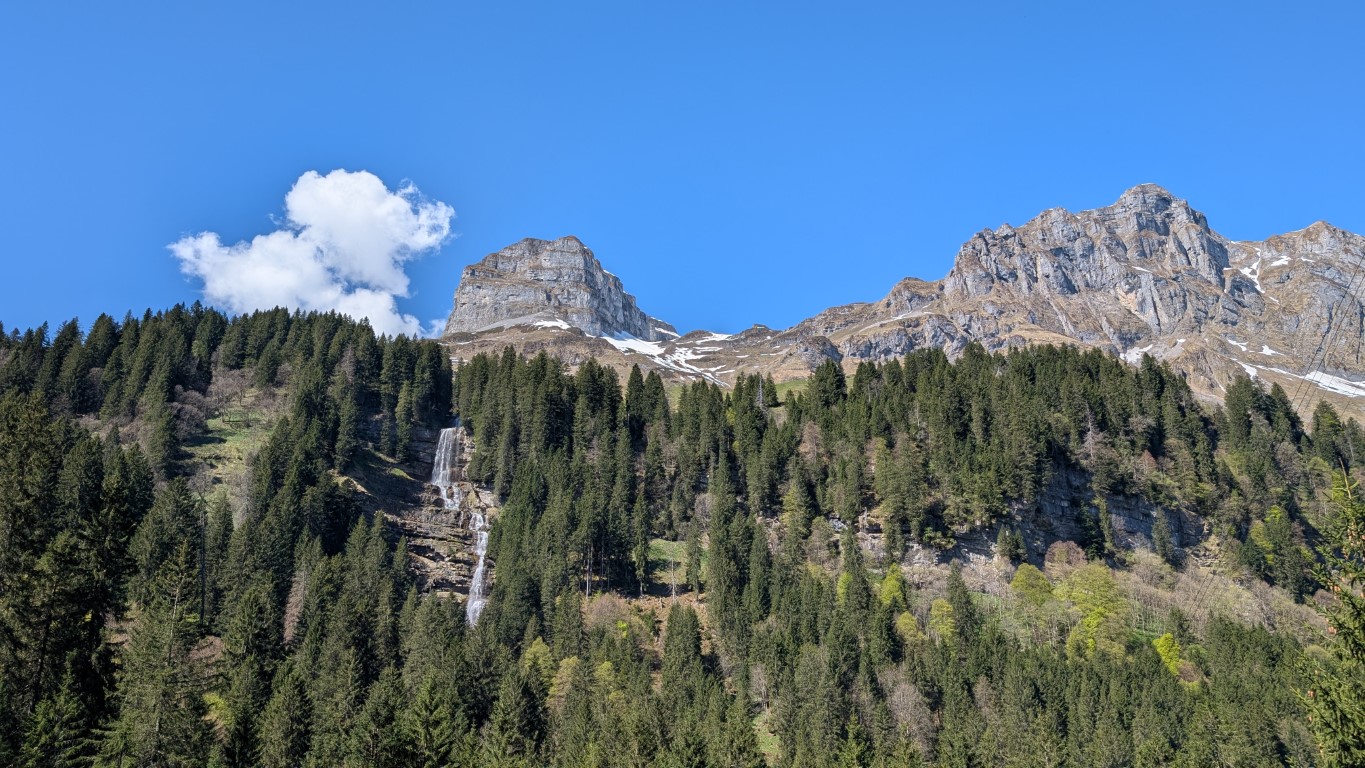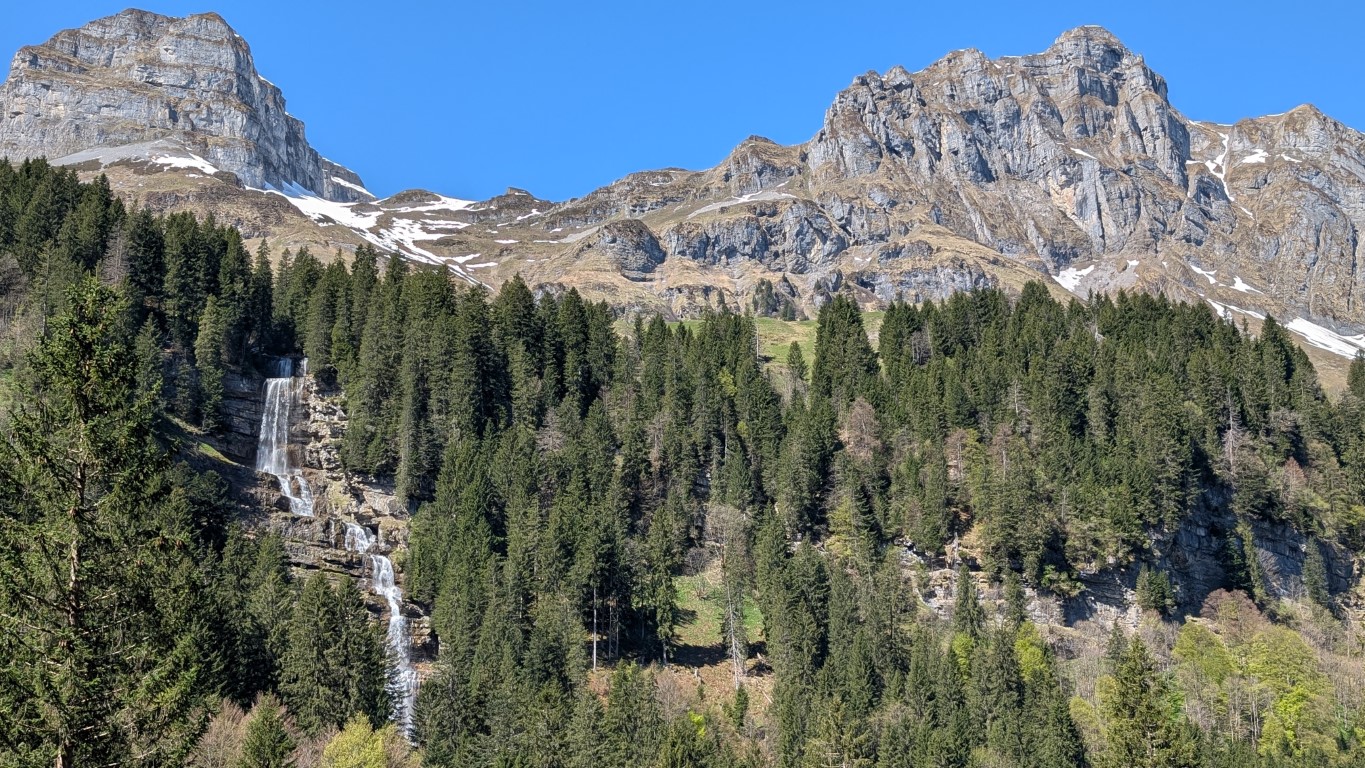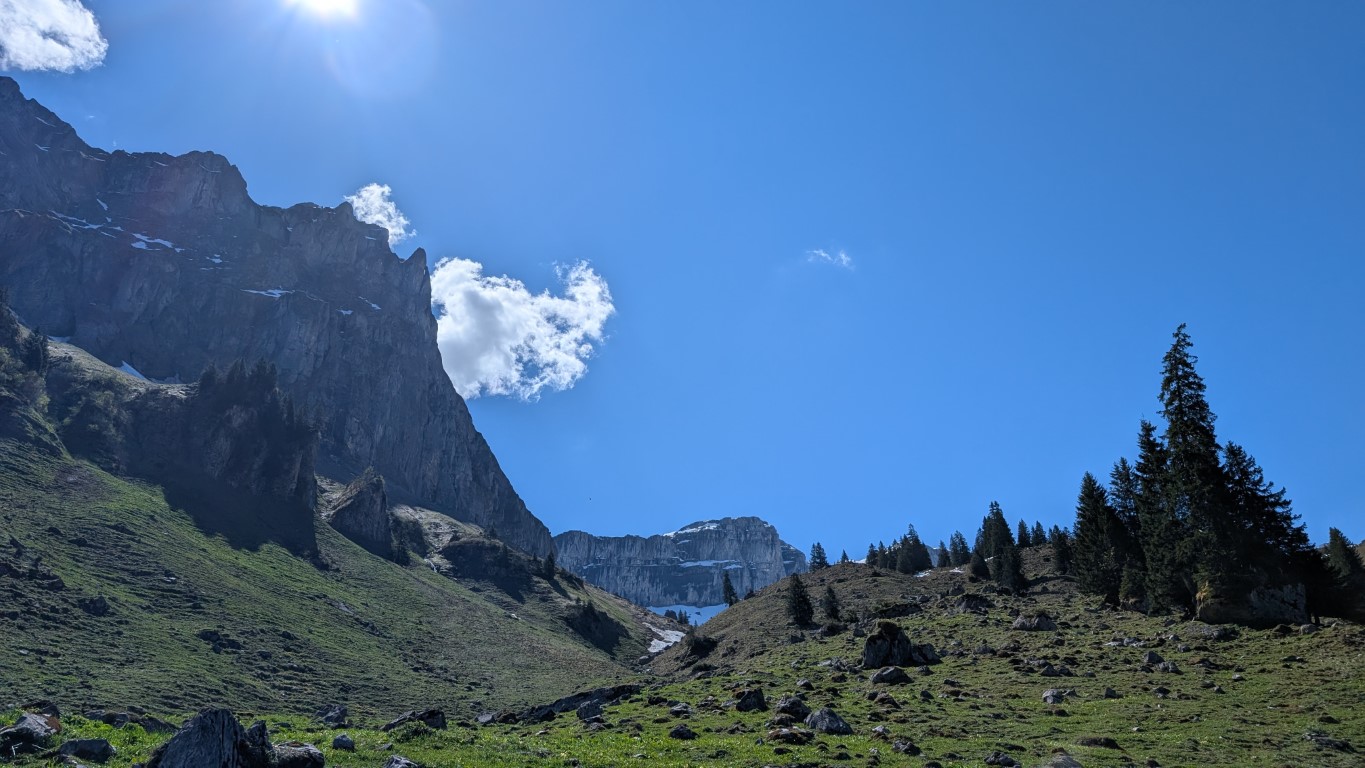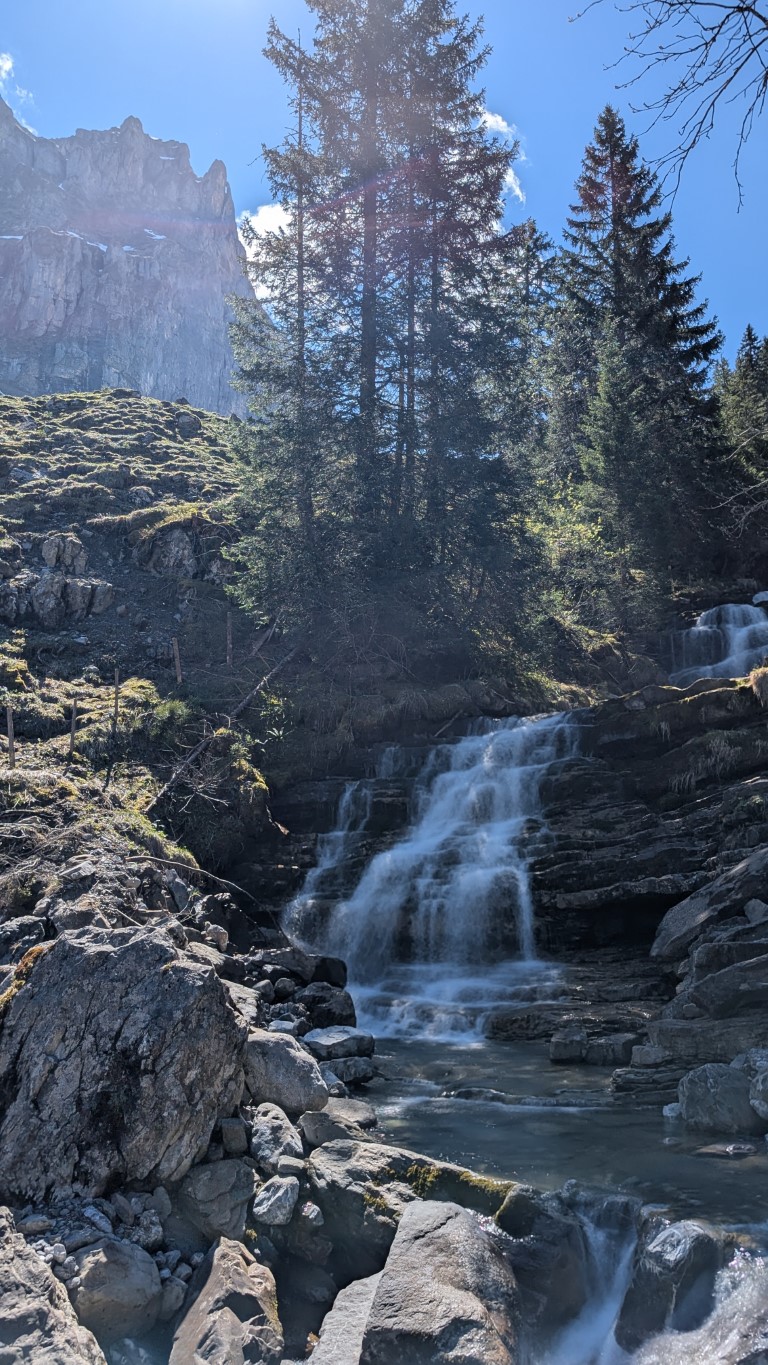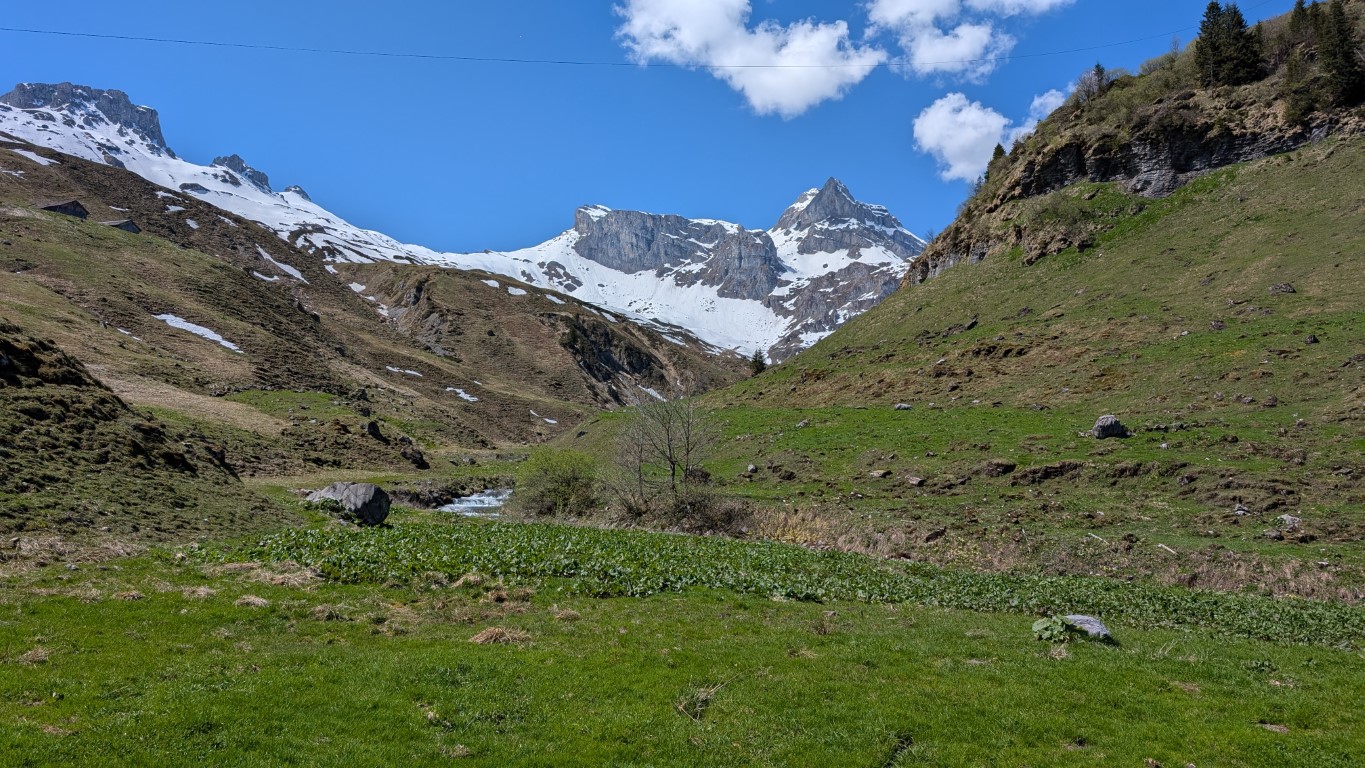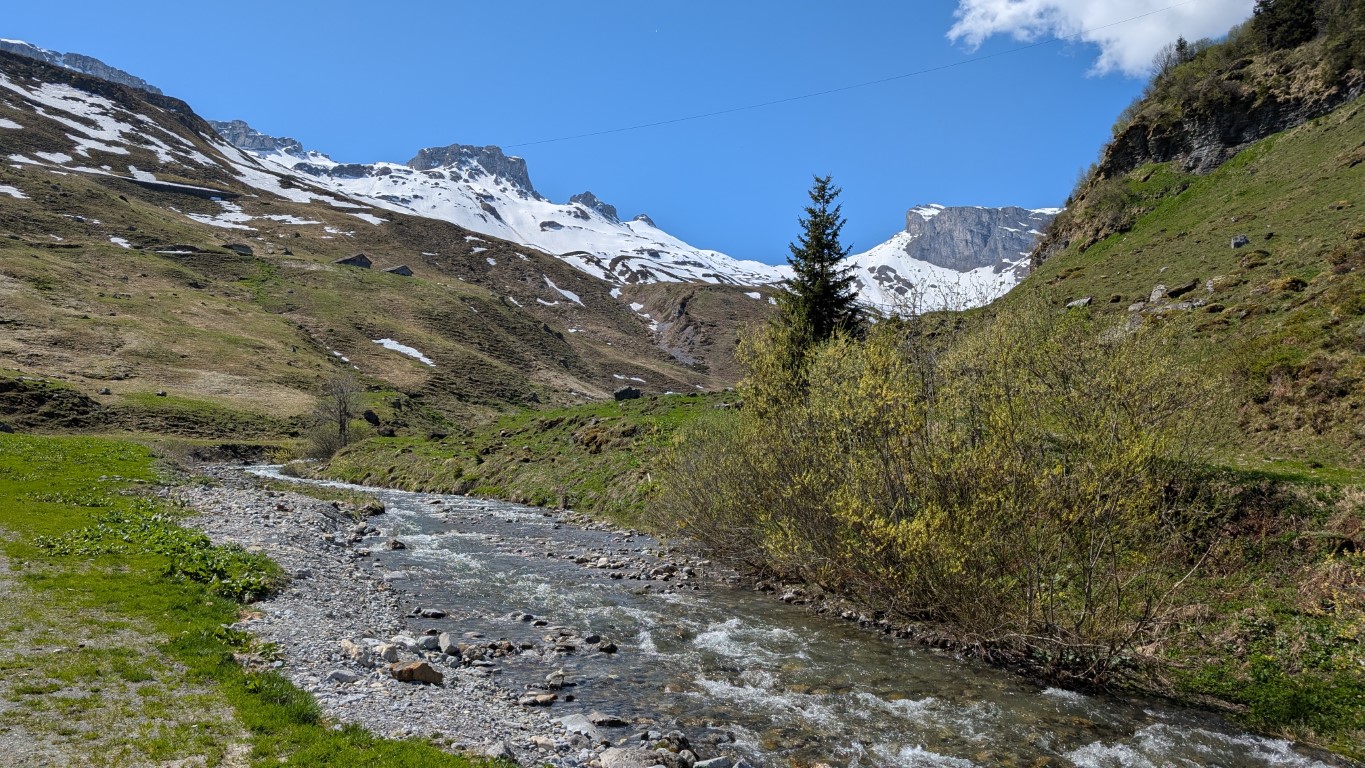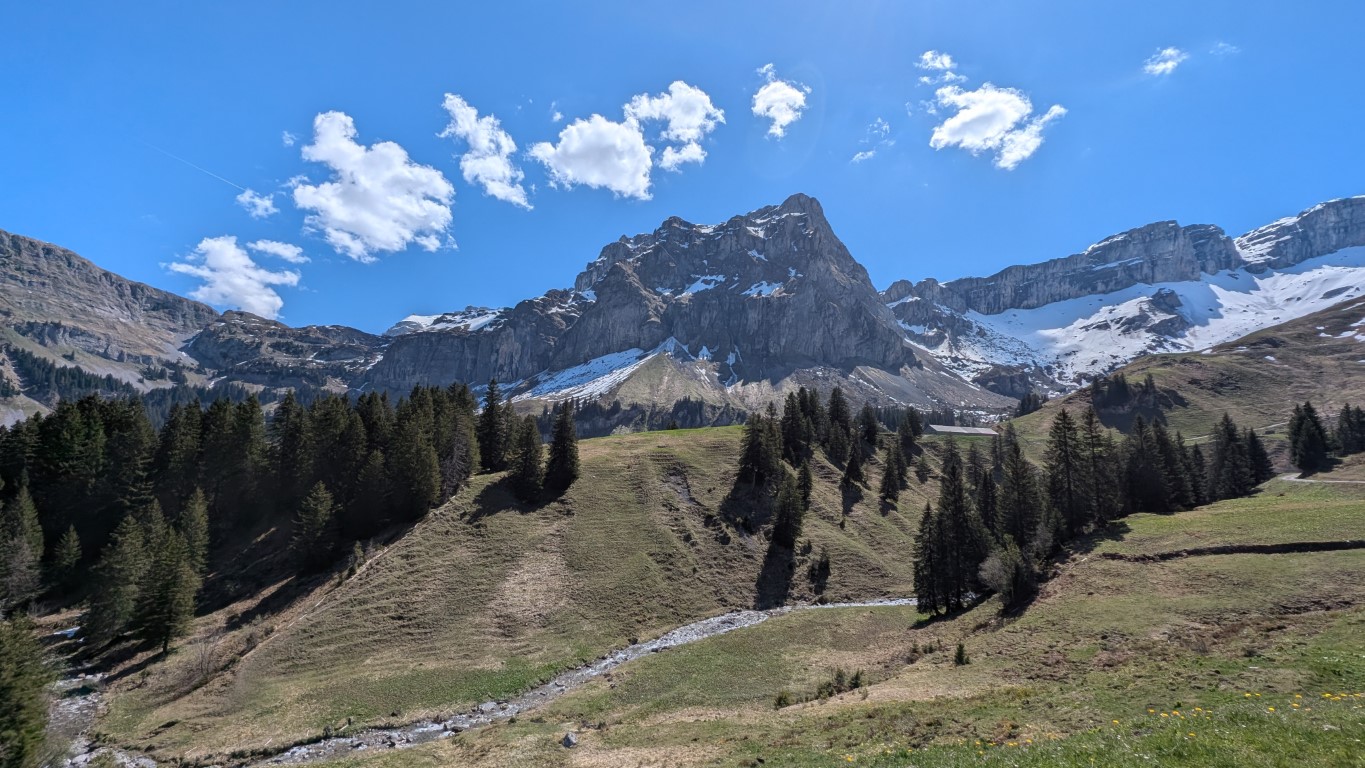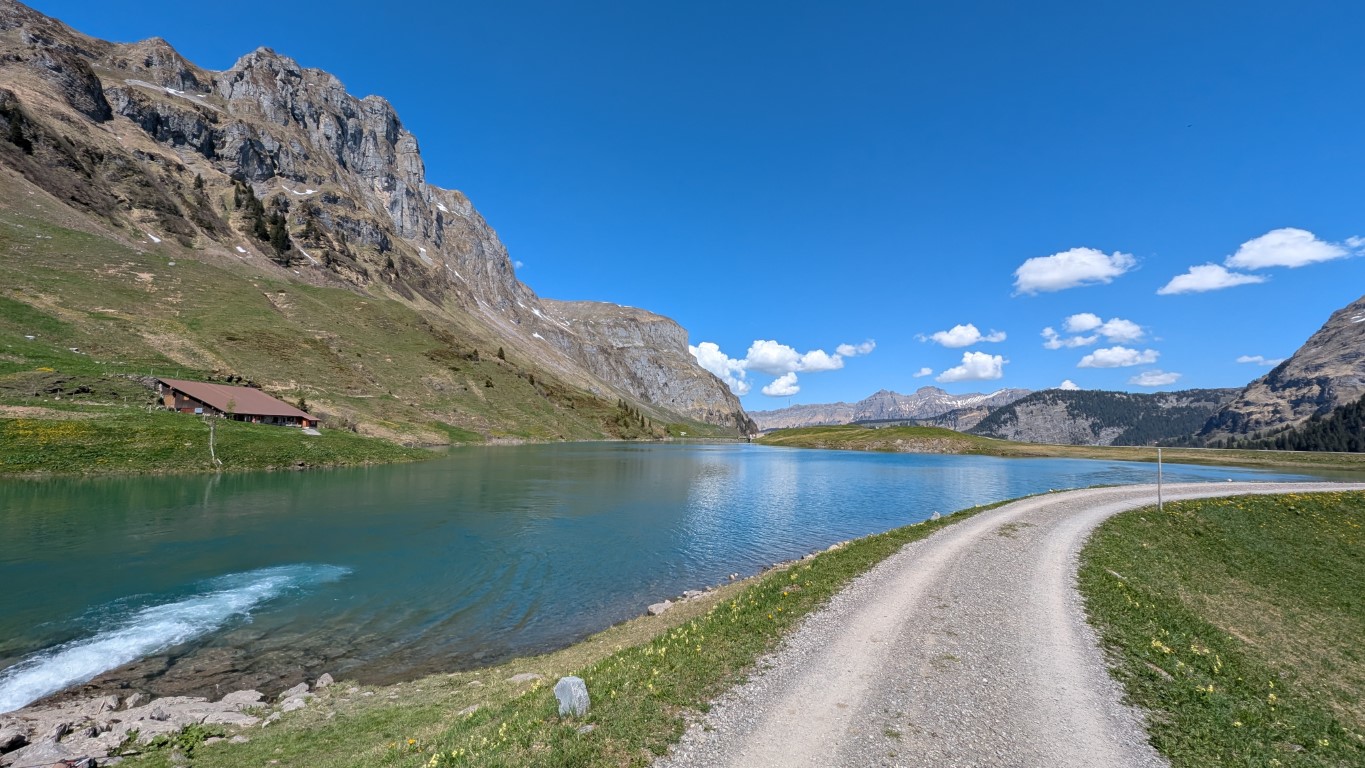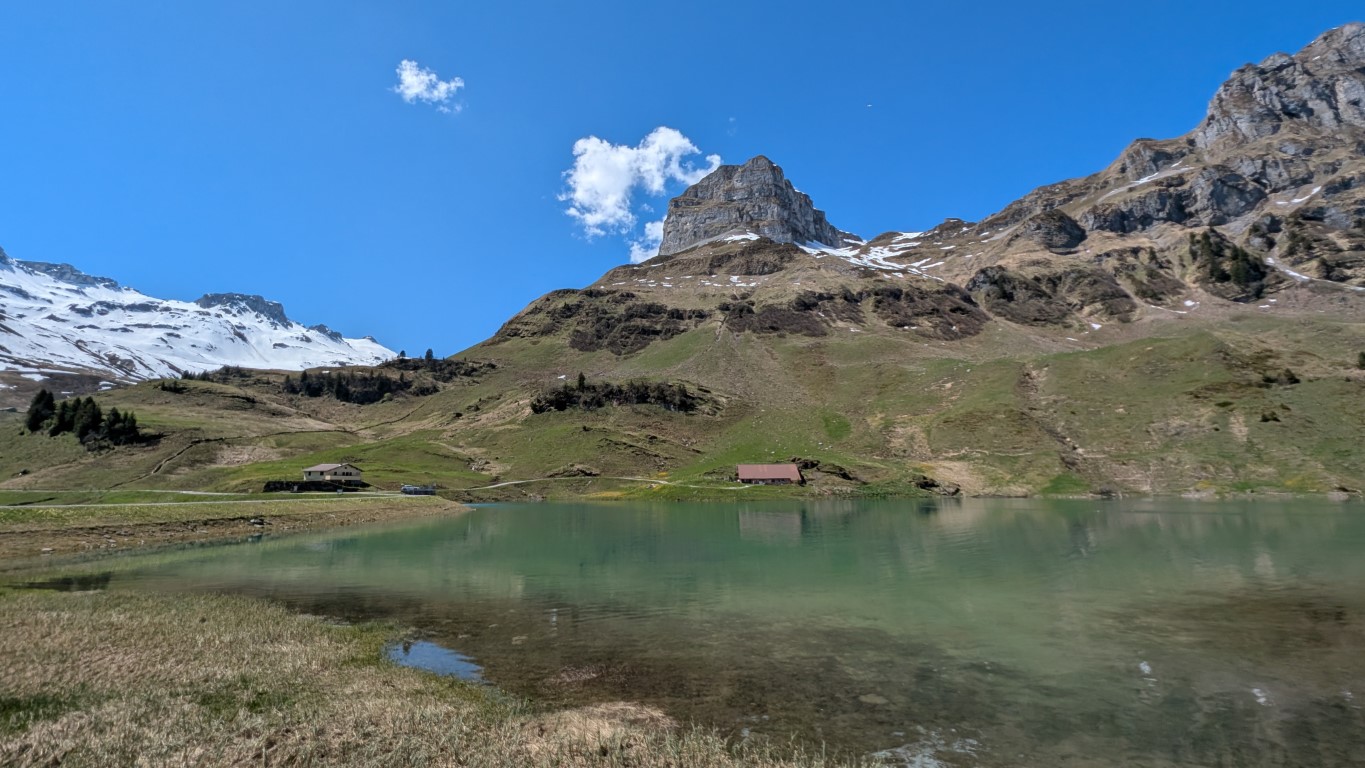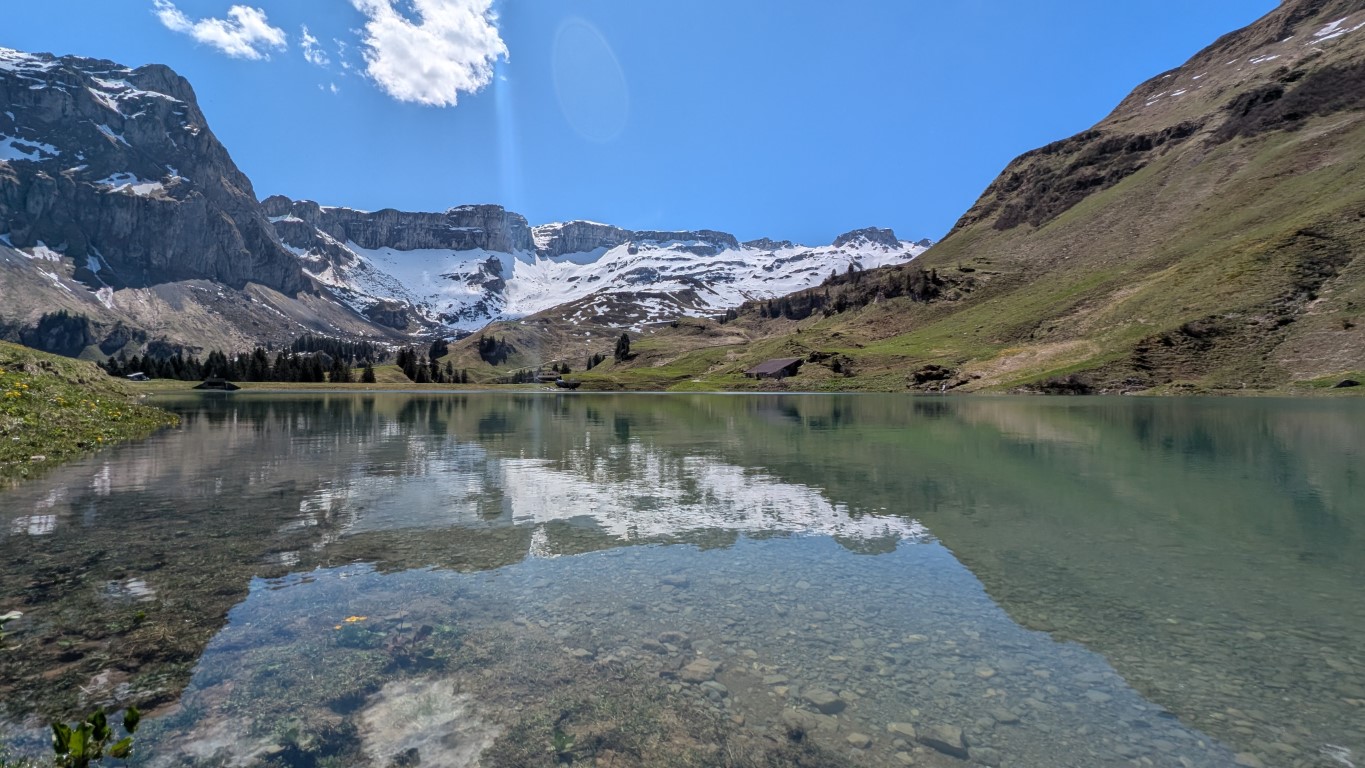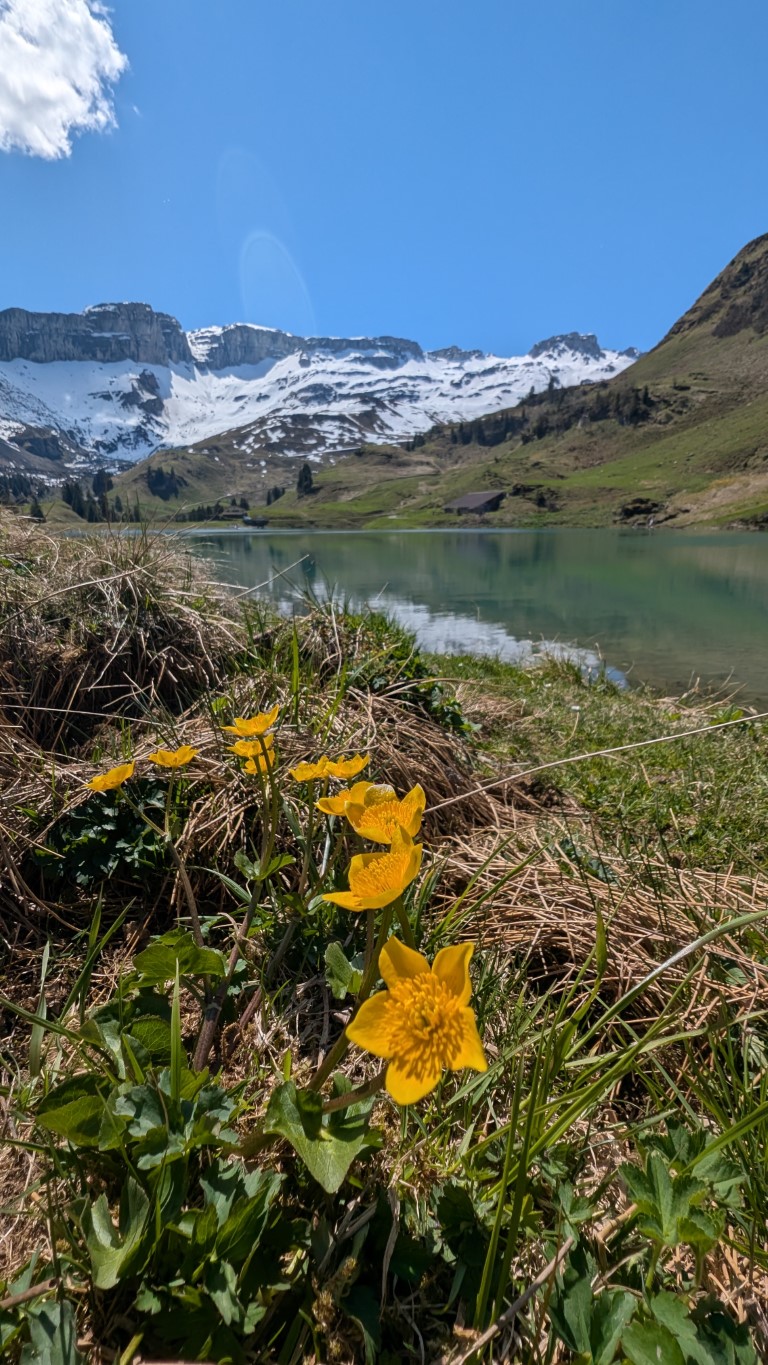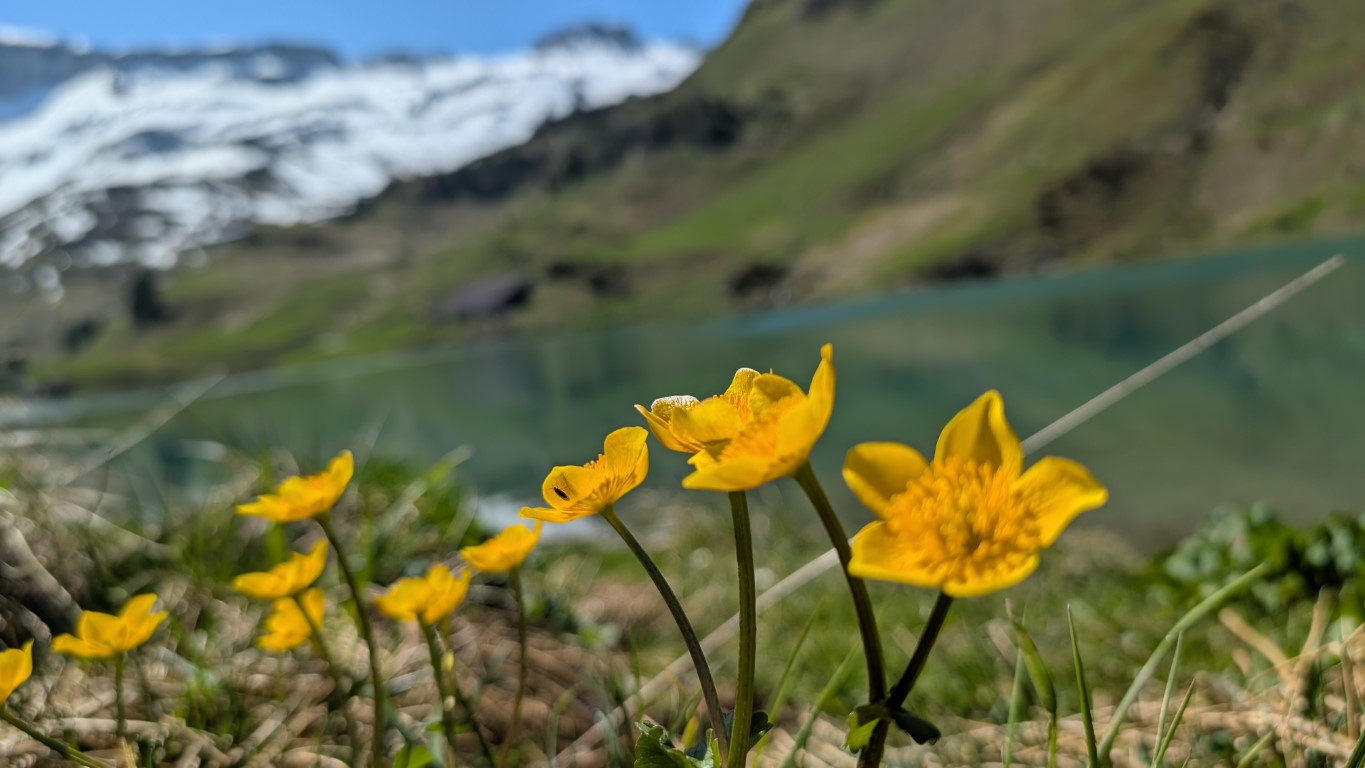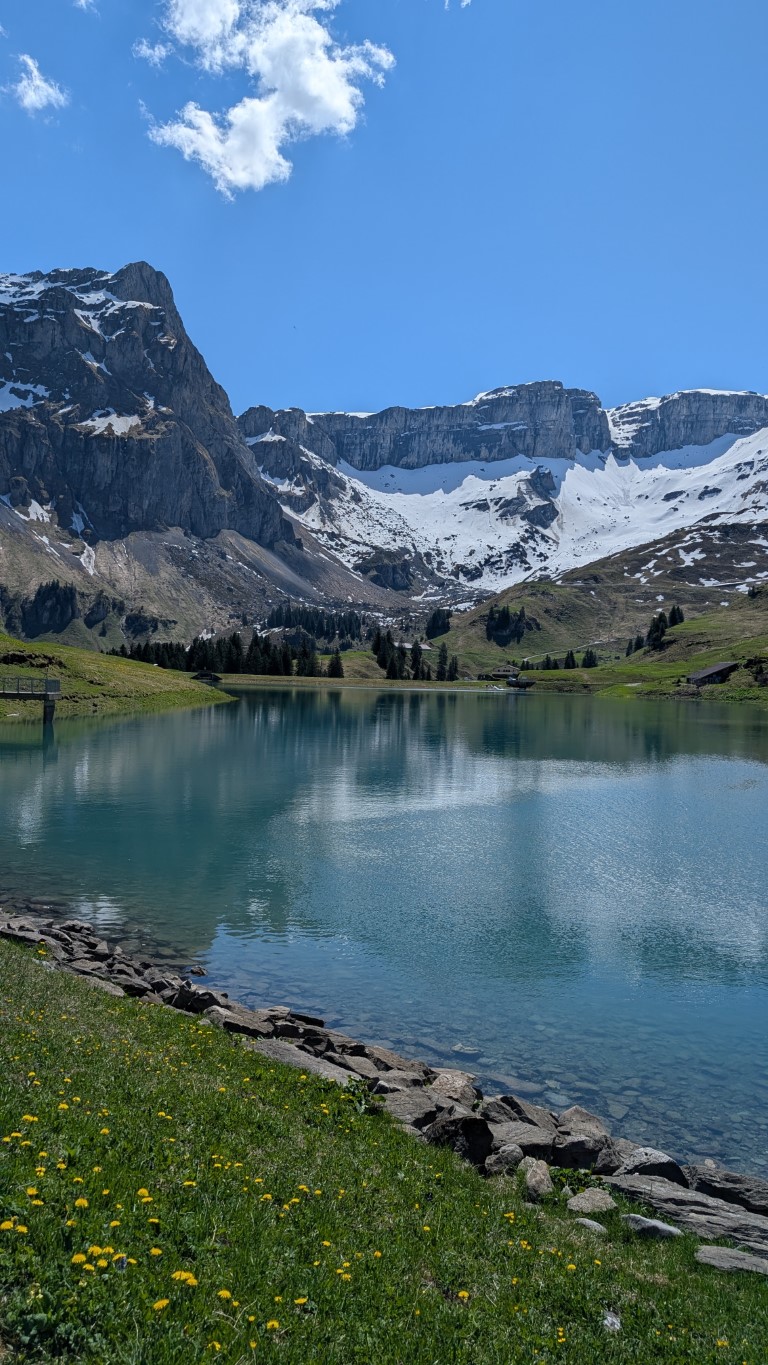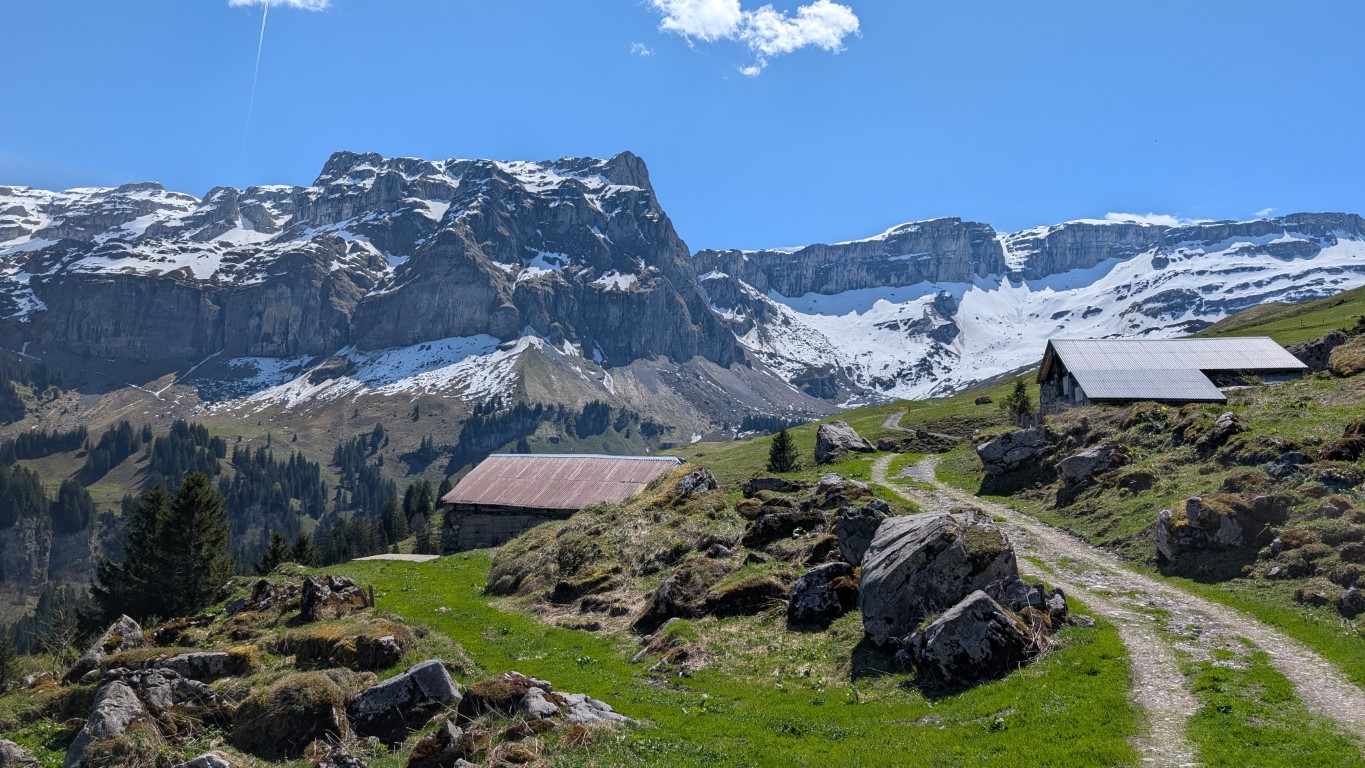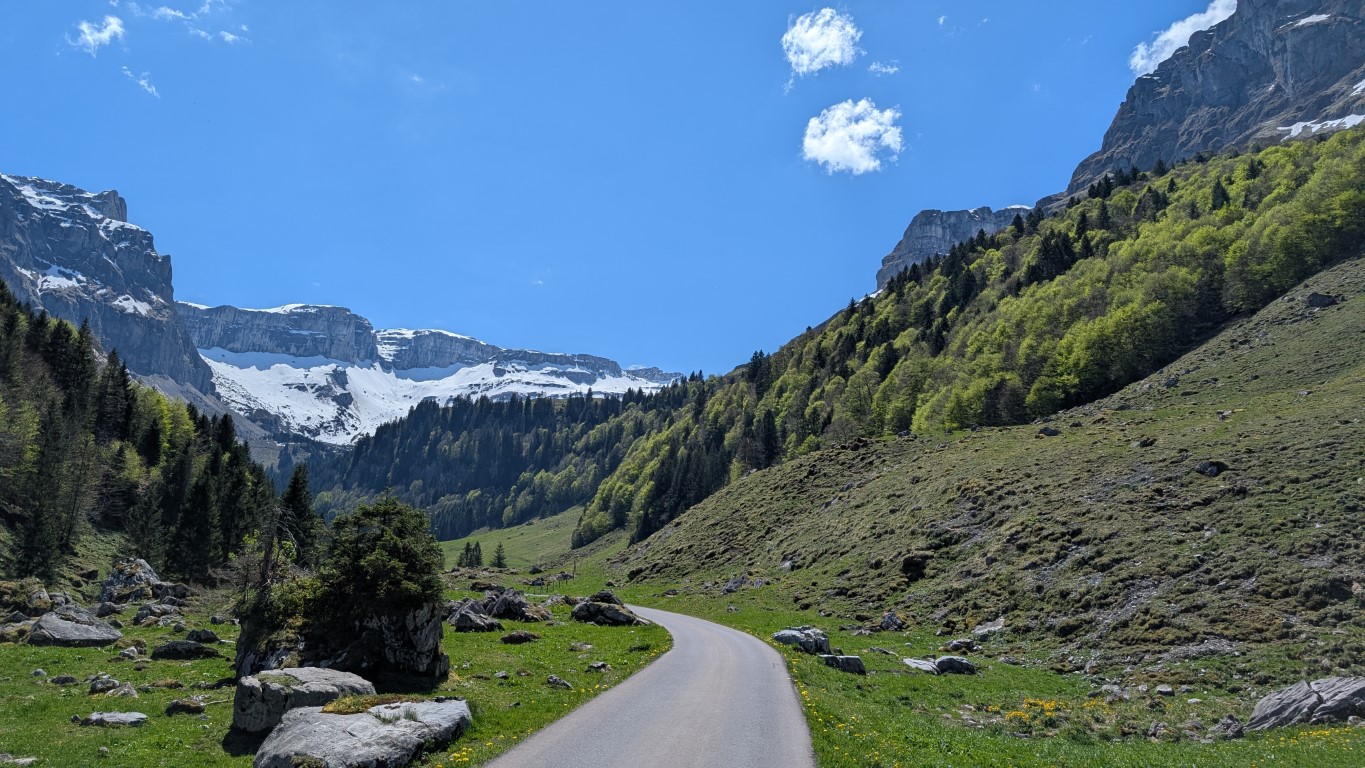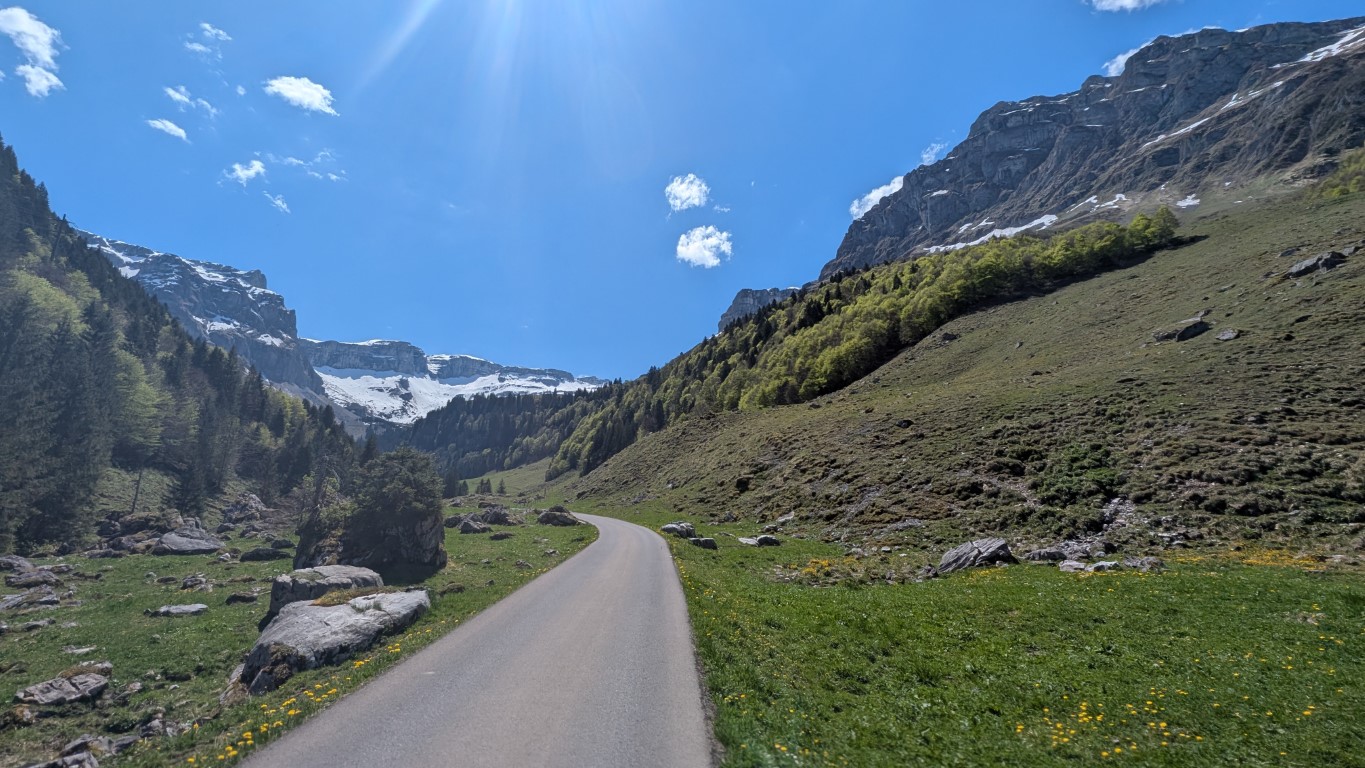At the very back of the Muotathal, where the valley narrows, waterfalls dance, and rock faces rise like ancient sentinels, lies a hidden natural treasure: the Bisisthal. Those familiar with Switzerland may be familiar with Glattalp. But anyone who wants to experience it – in its rugged originality and its fairytale magic – should head to Waldisee.
Between waterfalls and alpine huts: The Bisisthal calls
Our journey begins at the valley station of the Glattalp cable car in Sahli, where the valley almost disappears into the shadow of mighty mountains. The road we follow back to the "Schlänggen" stop is lined with lush meadows, mossy stone walls, and the kind of silence broken only by rushing streams and cowbells.
Here begins the ascent to Waldisee – a small mountain lake at 1,404 meters, tucked away on the Waldialp. The trail is easy, suitable even for less experienced hikers, but with enough magic for experienced hikers. The circular hike is about 6 kilometers long and takes about two and a half hours – if you can resist the many photo stops. But who would want to?
The Waldisee – A mirror of silence
Once at the top, the landscape suddenly opens up. Before us lies Lake Waldisee – tranquil, reflective, like a piece of heaven that has settled here. Behind it, the Waldistöck, Ochsenhubel, and Geissstock peaks rise into the sky. And on the shore: the Waldi Ranch, a cozy alpine inn that tempts with homemade cheese, cakes, a children's playground, and warm alpine coffee. Those who wish can even spend the night – under stars that seem so close, you could almost touch them.
The lake itself is small but full of life – dragonflies dance above the water, cows graze lazily on the surrounding alpine meadows. And if you look closely, you'll see the Waldibach stream flowing out of the lake, the lively thread that connects the Waldisee and the Salisee – like two sparkling pearls on a green velvet ribbon.
A touch of history: The blood-red Muota water
Anyone hiking in the Bisisthal valley not only feels the power of nature, but also the breath of history. A dark legend from the time of the Napoleonic Wars tells of the "blood-red Muota water."
In the autumn of 1799, Russian troops under General Suvorov marched over the Kinzig Pass into the Muota Valley to meet the French army. Fierce fighting ensued, particularly at the so-called French Redoubt south of today's Hinter-Iberg Bridge. Surprised by Russian flanking fire, the French fled in panic to the destroyed wooden bridge at Schlattli. Only two beams remained of the original crossing. In desperation, soldiers, cannons, and horses plunged into the foaming Muota River.
A high-ranking French officer on a white horse tried three times to force his horse to jump into the depths – on the third attempt, the animal dared. Horse and rider disappeared into the rushing water. The Muota, so the story goes, then flowed blood-red all the way down to Ibach.
A valley like from a picture book
The Bisisthal isn't just a remote valley. It's a place where time slows down, where you can feel the primal power of the mountains—and where you can get a little closer to yourself. Lake Waldisee, nestled between rolling meadows and rugged rock faces, is an ideal spot for nature lovers, photographers, families—and anyone seeking a sense of authenticity.


